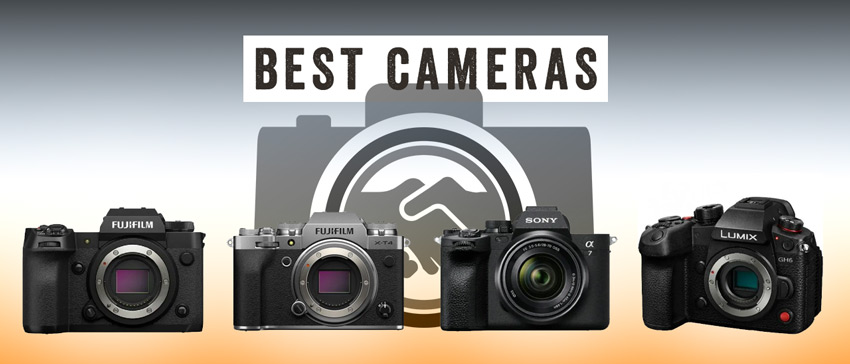
The 20 best cameras of 2023
Do you want to know what the best camera of this moment is? Good news, we made an ultimate top-list of the 20 best cameras of 2023. In this list, you’ll find both beginner, intermediate and professional cameras.
You can choose between compact and mirrorless cameras (we explain the types briefly and concisely below). On our best-list overview page, you will find all the top lists with breakdowns by camera type and budget. This list is regularly updated.
| 1 |  |
Sony A7 IV | Check Price |
| 2 |  |
Fujifilm X-H2 | Check Price |
| 3 |  |
Panasonic Lumix GH6 | Check Price |
| 4 |  |
Fujifilm X-T4 | Check Price |
| 5 |  |
Olympus OM-D E-M10 IV | Check Price |
| 6 |  |
Canon EOS R6 | Check Price |
| 7 |  |
Canon EOS R5 | Check Price |
| 8 |  |
Nikon Z6 II | Check Price |
| 9 |  |
Fujifilm X-S10 | Check Price |
| 10 |  |
Sony A7R IV | Check Price |
| 11 |  |
Nikon Z fc | Check Price |
| 12 |  |
Sony ZV-1 | Check Price |
| 13 |  |
Canon EOS R3 | Check Price |
| 14 |  |
Sony A1 | Check Price |
| 15 |  |
Lumix S5 | Check Price |
| 16 |  |
Nikon Z7 II | Check Price |
| 17 |  |
Sony A6400 | Check Price |
| 18 |  |
OM System OM-1 | Check Price |
| 19 |  |
Nikon Z5 | Check Price |
| 20 |  |
GoPro Hero 10 Black | Check Price |
Camera Deals Online exists thanks to you! When you buy a product through one of our links, we receive a small percentage of the total amount. This has no effect on the price of the product. Thank you!
What is a compact camera?
A compact camera always has a fixed lens that you cannot change. Most lenses have a zoom function, but you will also find some with a fixed focal length. The idea of the compact camera is that they are small and easy to use. The compact camera is almost always better than the camera of your phone, performs better in low light and has more (creative) functions. From 12 megapixels (any compact camera) and up, you can take photos that are sharp enough for a scrapbook. In general, the more expensive the camera, the better the quality and more options you have that you can adjust (manually). A good compact camera is not necessarily for novice photographers, and there are several advanced models that deliver top quality photos and where you can express your creativity.
When do I buy a compact camera?
As described above, a compact camera is not necessarily for novice photographers, professionals also opt for these models. A compact camera is a good choice, especially when traveling, on vacation or for everyday use. They are small, light, and easy to use. There are many compact cameras that fit easily in your pocket and are handy for everyday use. But even if you just don’t feel like lugging around and changing lenses, a high-end compact camera is definitely recommended.
What is a mirrorless camera?
A mirrorless camera is a digital camera where you can change lenses and adjust all settings yourself. It is called a mirrorless camera because there is no mirror in the camera, which is the case with a DSLR camera. The mirror in a DSLR reflects the light and then enters through the lens towards the viewfinder. Via the viewfinder, you then have an analog 1-on-1 image of what the lens sees. A mirrorless camera uses an electronic viewfinder and is much smaller and lighter than a DSLR camera because this mirror is not present. Because there is no mirror, manufacturers can also put the lens closer to the sensor, which results in more light information.
When do I buy a mirrorless camera?
If you want to set all the settings yourself and are willing to purchase and take several lenses with you, then a mirrorless camera is suitable for you. If you prefer to use only one all-round lens, do not change your lenses, but still want high quality, then it might be wise to look at a good (high-end) compact camera with a large zoom.
The advantage of a mirrorless camera is that you can change lenses. For example, it is possible to place an all-round zoom lens of 24-200mm on the camera and replace it later with, for example, a 85mm f/1.2 lens that is good for portrait photography. When you are going to buy a mirrorless camera, a lens is also part of it. Packages are available with some models that include a standard ‘kit lens’. These are fine lenses, but not of the highest quality, so it is important to look beyond the kit lens at some point. Fortunately, there is a good lens for every photography style.
What is a DSLR?
A DSLR camera is a digital camera where you can change the lens yourself and uses a mirror to reflect the incoming light towards the viewfinder. In general, the DSLR is used for photography, but the newer models are also good at shooting video. There is a mirror in the camera that reflects the light to the viewfinder, giving you an analog image of what the lens sees. The moment you press the shutter to take a picture, the mirror moves up briefly to allow the light coming through the lens to fall on the sensor. The most significant difference between a system camera and a DSLR is that the mirrorless camera is fully digital and has no mirror.
When do I buy a DSLR?
A DSLR camera is made to have full control over your photography and settings. The advantages of DSLRs are that the camera has a larger and better grip, an analog optical viewfinder and can take pictures at great speed. Of course, most mirrorless cameras can do the same, but they are often smaller with less grip. In addition, the viewfinder of a mirrorless camera is electric, which can be difficult when you want to capture fast-moving subjects because you can miss the right moment. You don’t have this problem with a DSLR. If you also want to record good videos, it is better to look at a mirrorless camera.
Why the prices differences in cameras?
The size of the sensor has a major impact on the price of a camera. A camera with a small sensor is generally cheaper than a camera with a large sensor (full frame). The larger the sensor, the more light and information it can capture and process. In addition, you capture a wider angle of view with a large sensor than with a small sensor. The image processor also plays a major role. This is the heart of your camera and the stronger and faster it is, the better quality photo you get.
Sensor types from small to large:
- 1/2.3 inch
- 1 inch
- Micro FourThirds
- APS-C
- Full Frame
Other factors that determine the price of a camera:
- General quality of the sensor
- Quality and speed of the image processor (which converts the digital signal into an image that we can see)
- Number of megapixels (this has less influence on the price than you think)
- Tiltable (touch) screen
- Innovative functions and technology (e.g. eye and animal eye tracking)
- A viewfinder/viewfinder (that you look through with your eye)
- Movie capabilities: HD(1280x720p), Full HD(1920×1080), UHD 4K(3840×2160), DCI 4K (4096×2160), 6K(6144×3160), 8K(7680×4320)
- Processing speed of the movie and compression (Low compression and fast processing is best)
- Image stabilization (optical 3-axis or 5-axis)
- Connectivity (Wifi, Bluetooth, NFC, GPS)
- Finish and quality of the body (is it weatherproof?)
We have taken all these points into account when drawing up this top-list.
Mirrorless camera buying advice
When you buy a mirrorless camera, a lens is essential. Each brand makes its own lenses, but fortunately, there are also plenty of excellent ‘third party’ lenses. Before purchasing a mirrorless camera, check the prices of lenses that fit on your camera. To know which lens fits your camera, all you have to do is look at the mount (Canon EF/RF, Sony E, Nikon FX/DX, etc.). That way you have a better idea of how much money you will end up spending.
Sony A7 IV | Best camera
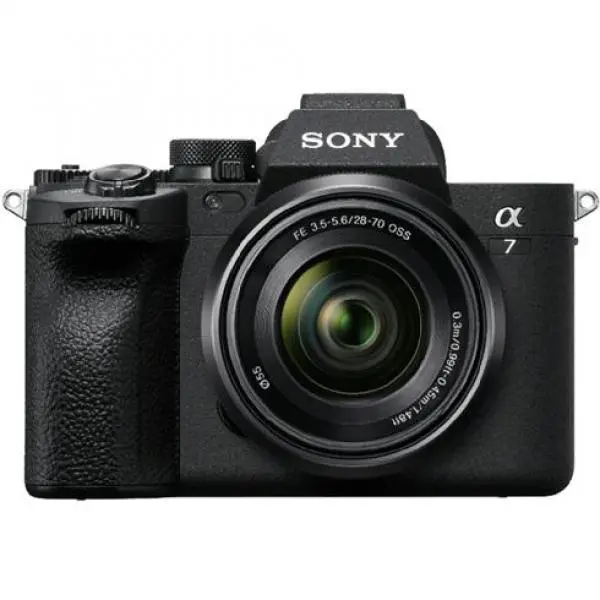
Main camera specifications
Camera type: Mirrorless camera – Level: (Semi)Professional – Sensor: Full-Frame
Full frame 33MP BSI CMOS sensor | BIONZ XR Processor | 5-axis image stabilization | 4K 60fps | FullHD 120fps | ISO 50-204800 | 10 photos per second | 658gr | 3″ vari-angle touchscreen
- 4K 60fps
- Livestreaming
- Vari-angle screen
- 15-stops dynamic range
- 4K 30fps from 7K oversampled.
- 4K 60fps has crop (APS-C)
The best camera is the Sony A7 IV. It is an all-in-one hybrid camera that can be used by all kinds of users. Looking at the improvements compared to the A7 III, the Sony A7 IV only deserves straight A’s. The full-frame mirrorless camera has a 33MP sensor. This means that you can use that camera for both photography and film, making it a hybrid camera. It costs a bit and that makes it not a camera for the entry-level creator, but more for the semi-professional. The power of the A7 IV is found in the new Bionz XR Processor that makes every process fast and smooth.
This also ensures that you have the best autofocus for both people and animals. You can quickly focus on faces and eyes. The video mode has been updated with 10-bit and no recording limits when using CFexpress cards. Filming in 4K 60fps is possible, but with a crop up to APS-C. That’s a shame for the filmmakers. While the Canon EOS R6 II offers many of the same features at a lower price, it can’t compete with megapixel count and technical speed.
Read more: Sony A7 IV review
Fujifilm X-H2 | 8K APS-C Mirrorless camera
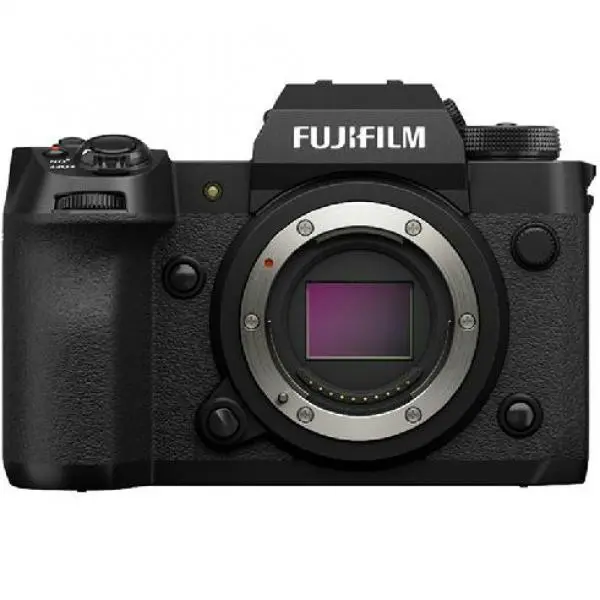
Main camera specifications
Camera type: Mirrorless camera – Level: Advanced– Sensor: APS-C
40MP APS-C X-Trans 5 HR BSI sensor | X-Processor 5 image processor | Fujifilm X Mount | ISO from 64 to 51,200 | Shutter from 15 minutes to 1/180,000 | 5-axis image stabilization | 7,728 x 5152 pixel photos | 8K 30p video | 6.2K 30p | 4K 60p, 1080 120p | 4:2:2 10-bit in 8K 12-bit RAW video via external recorder | F-Log, F-Log 2 gammas | EVF 5.76 million dot OLED | Two memory card slots 1x CFexpress Type B, 1x SD UHS II | 3-inch Vari-angle touchscreen, 1.62m dots | Burst of 20fps electronic, 15fps digital | 136.3×92.9×84.6 | 660 grams with battery
- 40MP sensor
- 8K video with long recording times
- 15/20fps continuous shooting
- 160MP multi shot mode
- Performs like more expensive full frame models do
- X-H2S is faster
- You have to buy extra ventilator separately
The Fujifilm X-H2 is the second variant of the two flagships of the X-H series. The X-H2 has 40 megapixels, and it is the first APS-C sensor ever with that number. You can film in 8K30fps, 6k30fps, 4K60fps or FHD 120fps. It is also possible to broadcast RAW video to an external recorder, you have 5-axis stabilization up to 7 stops and a dynamic range of 13 stops. With the X-Processor 5 it’s also a fast camera, and you can shoot up to 20 frames per second electronically and 15fps mechanically. While the X-H2S is the faster camera, good for sports and wildlife photography, for example, the X-H2 has the larger resolution. Fujifilm shows what APS-C sensor system cameras can do and puts all competitors on edge.
Panasonic Lumix GH6 | Best MFT-camera
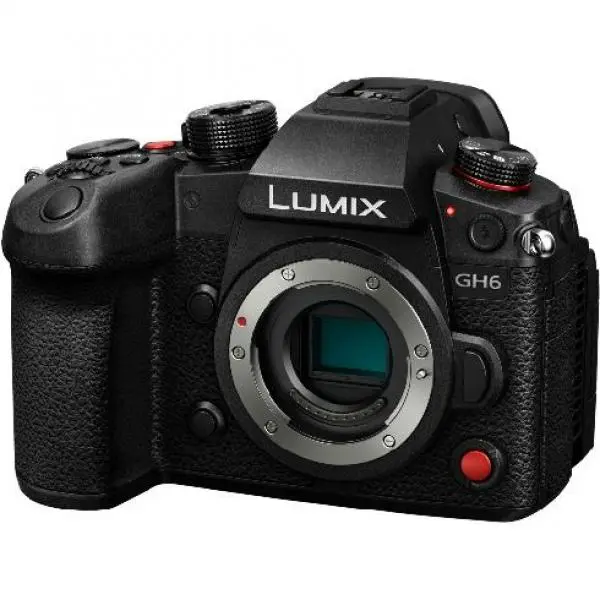
Main camera specifications
Camera type: Mirrorless camera | Level: Advanced | Sensor: Micro FourThirds
25.2MP MFT sensor | Venus Engine | 5.7K 60fps | 4k 120fps | FHD 300fps | ProRes 4:2:2 10-bit | V Log | 7.5 stops of stabilization | 13+ Dynamic Range | 100MP Photos | 4 channel audio recording
- Many video options
- Great image stabilization
- Focused on making video
- Good photography
- Expensive and complex
The 2022 Panasonic Lumix GH6 is the flagship of the Lumix GH series and brings many improvements over its predecessor: the Lumix GH5 II. The Lumix GH6 shows that the Micro FourThirds sensor is back and more powerful than ever. The all new Stacked BSI sensor gives you 25.2 megapixels, and it is possible to take 100MP photos. The video qualities have been boosted to 5.7K 60fps or 5.8K 30fps anamorphic. You get the best slow motion with 4K 120fps or 300fps in Full HD. Although an 8K video function is becoming increasingly common, Panasonic has opted for absolute quality in 5.7K and 4K with Apple ProRes codes and high bit rates. We should also note that there is no internal RAW recording available.
Panasonic promises that you can record unlimited film and that is because an active cooling system is built in, which keeps the Lumix GH6 at the right temperature. However, this cooling system makes that the camera is bigger and is almost as large as a full-frame model. We also see handy REC buttons on the top and front, a tilt and vari-angle touchscreen and 5-axis internal image stabilization with 7.5 stops. Panasonic is probably taking a shot at a camera that is allowed by Netflix because we find TC in/out and other important features and connections that Netflix demands. The Lumix GH6 certainly doesn’t have the best specs, but when you dive into the video settings, you’ll see that almost every kind of mode is available. It is a real all-rounder for a great price.
Fujifilm X-T4 | Best all round mirrorless camera
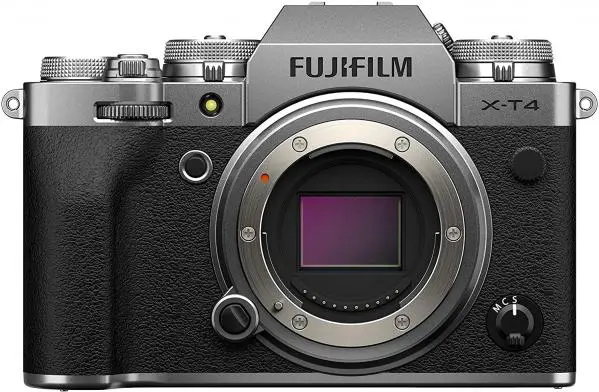
Main camera specifications
Camera type: Mirrorless camera | Level: Advanced | Sensor: APS-C
EISA 2020-21 award: Camera of the year | All-round system camera | 26.1mp X-Trans CMOS 4 sensor | DCI 4K, 60fps movie | Full HD 240fps | Powerful battery | 5-axis internal image stabilization | 3″ fold-out touchscreen | Fast autofocus | Silent Mode | Wi-Fi & Bluetooth | Film Simulations | Up to 30 photos per second
- DCI 4K 60fps
- Bitrates to 400Mbps
- Burst of 30 photos per second
- 5-xis IBIS
- Up to 600 photos on one battery
- Time limit filming (20 to 30 minutes)
The X-T4 is an ideal model if you want an all-round semi-pro model that is extremely good at shooting stills and movies. The APS-C sensor has 26.1 megapixels and a good image processor and has everything you need to take great photos. With the electric shutter, you can take bursts of 30 photos per second, and with the 5-axis IBIS, this makes a great sports or wild camera. You are also completely up to date with the X-T4 when it comes to film. The ability to film DCI 4k, 60fps with high processing speeds (400Mbps) is nice and makes this camera suitable for the semi-professional filmmaker. The only drawback is that this camera comes on the market fairly late. If you consider that the Panasonic GH5, with similar features, is from 2017. However, the X-T4 uses newer techniques, has a slightly larger sensor and phase detection instead of Panasonic’s less accurate contrast detection. At the moment, this is the best all-round APS-C mirrorless camera you can buy.
Olympus OM-D E-M10 Mark IV Mirrorless camera
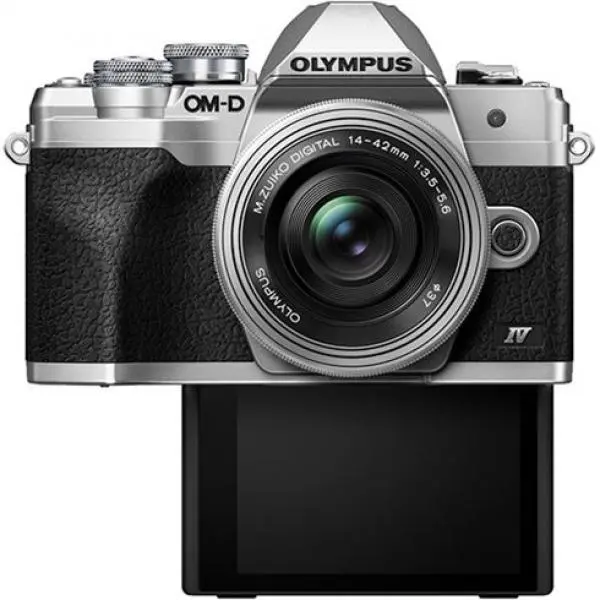
Main camera specifications
Camera type: Mirrorless camera | Level: Beginner | Sensor: Micro FourThirds
20.3 megapixel Live MOS sensor | Micro FourThirds mount | 5-axis image stabilization | 4K 30P, Full HD 60p movie | Tiltable 3″ touch screen | 12 Art Filters | 383 grams | Wi-Fi & Bluetooth
- New 20.3 megapixel sensor
- 5-axis image stabilization
- 3″ tilting screen
- No 4K 60fps
The Olympus OM-D E-M10 Mark IV has several major improvements over the Mark III, and the most striking change is the sensor. The first three versions had 16 megapixel sensors and that is on the low side, but the fourth version finally has 20.1 megapixels and that makes a big difference. Especially if you want to print or edit your photos. The internal 5-axis image stabilization lets you shoot handheld for longer in low light and is suitable for handheld filming. Thanks to the tiltable touchscreen, you can also use this light camera as a vlogging camera. There is now a wide range of affordable MFT lenses, so you don’t have to spend a lot on additional lenses. It also resembles its predecessor in many respects, but in our opinion, the updated sensor is enough reason to stop looking at the M10 III and go for the M10 IV.
Canon EOS R6 | Best choice Full Frame all-round mirrorless camera
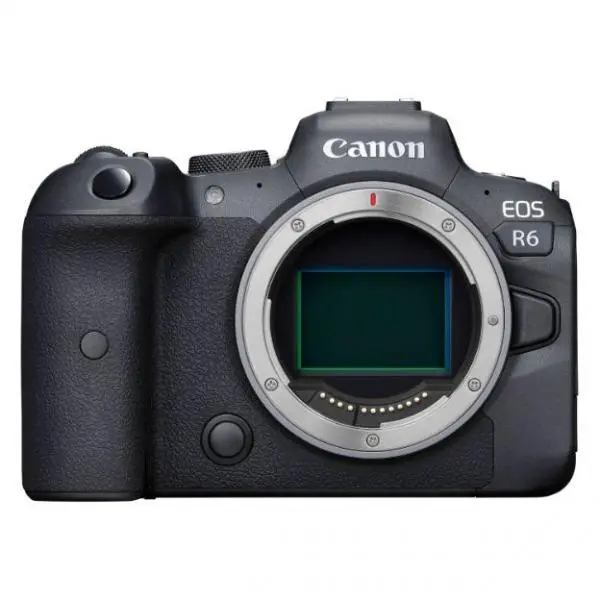
Main camera specifications
Camera type: Mirrorless camera | Level: Advanced | Sensor: Full frame
Full-frame 20.1MP CMOS sensor | 4K, 60fps movie | 5 to 8 stops of in-body image stabilization | 20fps photos with electronic shutter | ISO 100-102400 | Dual Pixel CMOS AF II | Body, animal, eye, face recognition
- Affordable for the masses
- 4k 60fps 10 bit cinema log movie
- 5 to 8 stops of in-body image stabilization
- Face, body, and eye recognition & tracking
- 20fps with electronic shutter
- Overheating issues in video mode
The Canon EOS R6 is a full-frame mirrorless camera for the advanced or very enthusiastic photographer and videographer. While the EOS R5 steals the show with 8K, the R6 is perhaps even more interesting. This is because it actually has everything you would want and expect from a camera at the moment. We are talking about an excellent megapixel number of 20.1, 4K 60p 10-bit film, 5 to 8 stops of image stabilization (with the right RF lens), Dual Pixel II autofocus and of course the ability to recognize faces, eyes, and animals.
You can see this as an all-round full-frame model that is affordable for the masses. In addition, it can be used by all kinds of users. With 20 frames per second, sports photographers can work well, and filmmakers get detailed and stabilized video images. The biggest problem with this model is the overheating that prevents you from unlimited filming. However, this issue is solved through firmware updates. That it is a camera for the serious photographer can be seen from the professional functions such as histograms and a double card slot that supports multiple types of cards.
Canon EOS R5 | 8K mirrorless camera
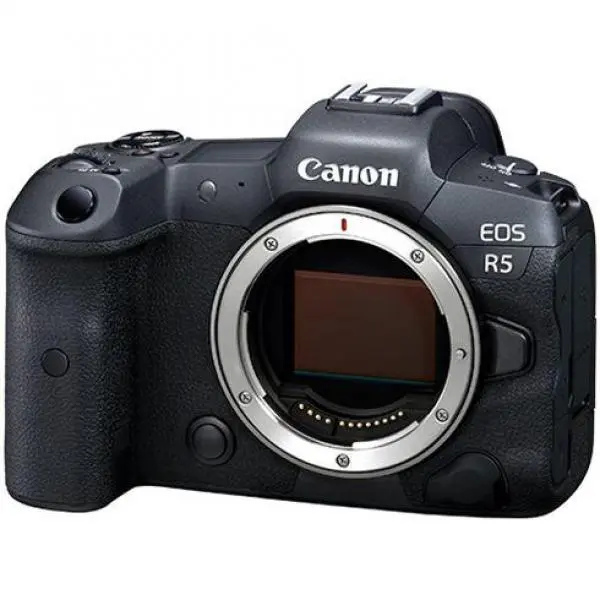
Main camera specifications
Camera type: Mirrorless camera | Level: Professional | Sensor: Full frame
45-megapixel full-frame CMOS sensor | 8K 30fps, 12-bit RAW | 4K 120 fps | 8-stop image stabilization | 20fps electronic | Vari-angle touchscreen | Dual Pixel CMOS AF in all 4K and 8K modes
- 8K 30fps
- 4k 120fps
- 8-stop image stabilization
- Awesome 32mp frame grabs
- Overheating is an issue
The Canon EOS R5 films at a maximum resolution of 8K 30fp, 12-bit RAW and can be used for razor-sharp 8K images or even sharper 4K images. Also consider the possibility to zoom in up to twice without losing quality when you edit 4K video. If you film in 4K, you can film at 120fps and the AF focus is available in every video mode. The disadvantage of the EOS R5 is that it suffers from overheating when filming at 4K 120p and 8K, but Canon is working hard to address this problem through firmware updates. Third parties also released some external fans, to cool the camera down. Another big advantage is the 8K frame grab, where you can extract 32mp photos from an 8K image. This image is sharper than many 30mp+ cameras. You take photos in RAW (14-bit) or C-RAW and you can use one of the two CFexpress-1x SD UHS-II card slots. While the R5 is better than the R6 in terms of specs, the EOS R6 retains many of the R5’s features, at a much lower price.
Nikon Z6 II | Mirrorless camera
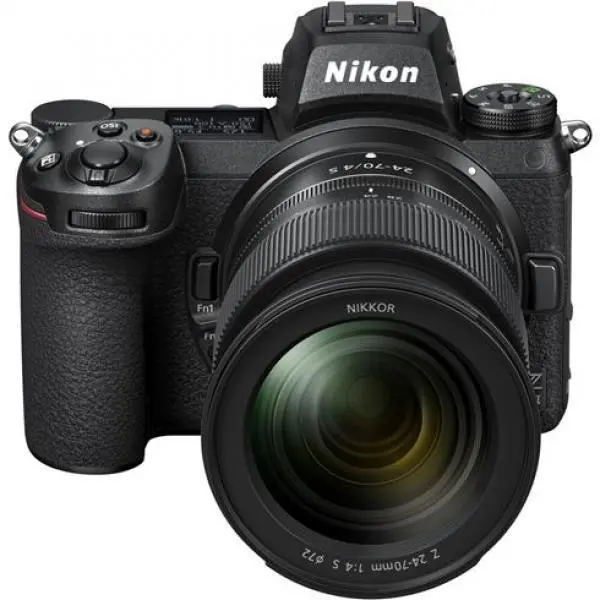
Main camera specifications
Camera type: Mirrorless camera | Level: Advanced | Sensor: Full frame
Lens mount Nikon Z | 24.5MP BSI Full-Frame Sensor | 2x Dual EXPEED 6 | 273 AF points | 5-axis image stabilization | Human/Pet eye/face AF detection | Tilt touchscreen | weatherproof | ISO100-51200
- 14 photos per second
- Great image quality
- Easy to use
- 4K 60fps
- No vari-angle screen
The Nikon Z6 was the number one mirrorless camera for many, but everything comes to an end eventually. That has nothing to do with the Z6, but with the fact that there are now many new cameras, including the Nikon Z6 II. The Z6 II has been vastly improved over its predecessor. The camera now contains two EXPEED 6 image processors, and you have the option to film in 4K 60fps without a crop (the Z7 II uses a 1.5x crop). The Z6 II also does well in terms of autofocus, and it easily recognizes eyes and faces of people and animals, and it works when you shoot continuously at 14fps. The extra SD card slot is also useful, and it is possible to use UHS-II and XQD/CFexpress cards. Furthermore, the Z6 II is simply a very good all-round camera for both photographer and videographer. One of the better cameras on the market today.
Fujifilm X-S10 | Mirrorless camera
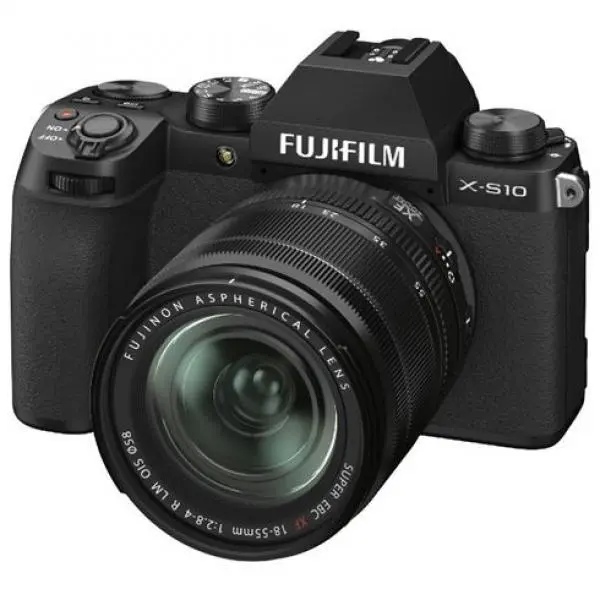
Main camera specifications
Camera type: Mirrorless camera | Level: Advanced | Sensor: APS-C
APS-C System Camera | Fujifilm X lens mount | 26.1 megapixel BSI CMOS Sensor | X Processor 4 | IBIS up to 6 stops and 5 axes | 4K 30fps | Full HD 240fps | 2.16 million AF points | 3 Inch tiltable display
Fujifilm X-S10 body
- Razor-sharp photos and videos
- In-body stabilization in small body
- Easy to operate
- Not weatherproof
- No 4K 60fps
The Fujifilm X-S10 is a good camera that has almost everything you need as an enthusiast or professional. It’s remarkable how they can pack so many functions into such a small body. You get an APS-C sensor with 26.1 megapixels (same as the Fujifilm X-T4), 4K 30fps film, vari-angle screen, RAW photo compression and even 6-axis in-body image stabilization. The latter is special because the body is so extremely compact. This model would have been more perfect if it had been able to handle 60fps in 4K, but you can’t get everything for this price, of course. Also don’t forget the 18 Fuji film simulations. These give the well-known retro look & feel of the analogue photo film. Thanks to the deep grip, this is also a nice camera with longer and heavier lenses.
Sony Alpha A7R IV | Megapixel monster mirrorless camera
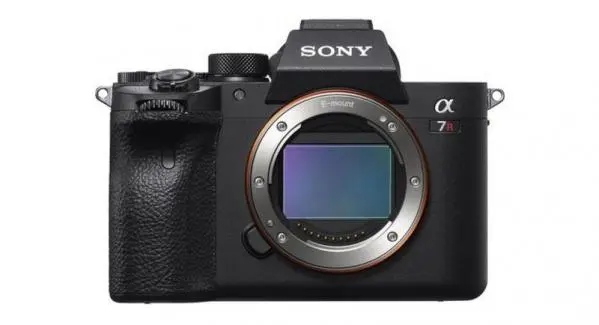
Main camera specifications
Camera type: Mirrorless camera | Level: Professional | Sensor: Full Frame
61MP 35mm full frame Exmor R CMOS sensor | 15-stop dynamic range | 4K UHD @ 30fps | Dual Card Slots | Pixel Shift 280mp Photos | 10 photos per second | 567 phase-detection autofocus points | Real-time Eye AF | Dust and splash proof
- 280 megapixel photo option
- Extreme speed
- Real-time Eye AF
- 5.5 stops of 5-axis in-body image stabilization
- Still no fully tiltable screen
- 4K movie only in 30 fps
- Heavy and expensive
The Sony A7R IV is made for photographers who want to take great photos full of details and are prepared to do a lot of post-processing. The photos that come out of the camera don’t need any editing, but with so many pixels and data it would be a shame not to get the most out of them. With a 61-megapixel full-frame sensor, you can do whatever you’d like. The sensor in the A7R IV sensor has been updated and uses a Fast Hybrid AF system with 567 phase-detection autofocus points. These points cover 99.7% of the height and 74% of the width of the sensor. In addition, there are 425 contrast detection points. This makes focusing even faster and more accurate. Don’t be put off by the ISO value of ‘only’ 100-32000. This can be expanded from 50 to 102400 ISO. You film in DCI 4K 30fps and these are all stabilized thanks to the 5-axis image stabilization. It is mainly the pixel shift mode that stands out with the A7R IV: 280 megapixels. Please note, this is only possible when you put the camera on a tripod. In addition, you get huge files, so choose your shots well. The A7R IV has the latest and most advanced sensor and image processor technology that ensures that eyes, animals, and faces are recognized, even if the subject is not facing the camera. At the moment there are actually no better photo cameras on the market. If you want the best of the best for years to come, the A7R IV is the only choice!
Nikon Z fc mirrorless camera | Good vlogger camera
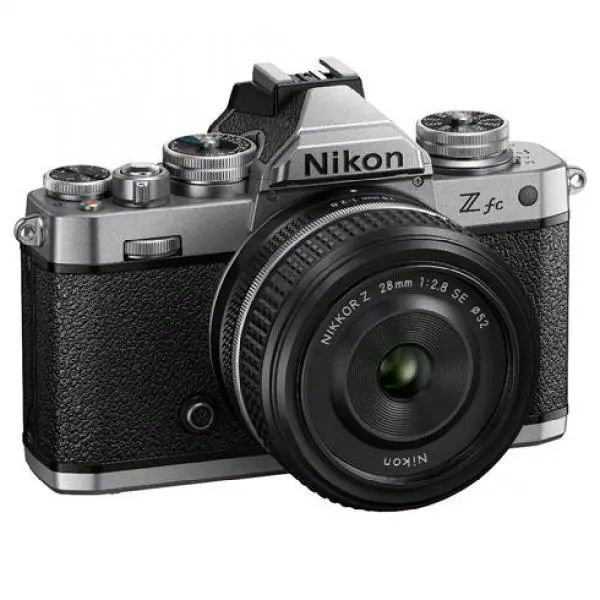
Main camera specifications
Camera type: Mirrorless camera | Level: Beginner/Vlogger | Sensor: APS-C
20.9MP APS-C (DX) CMOS sensor | EXPEED 6 Processor | Vari-angle 3″ touchscreen | Physical Buttons | UHD 4K | Eye and animal focus | 20 digital filters
- Classic design
- Vari angle touch screen
- 20 digital filters
- Physical buttons
- No pop-up flash
Apart from the design, the Nikon Z fc is very similar to the Nikon Z50. Which isn’t a bad thing at all, as the Z 50 is one of our favorite cameras. Big differences are that the Z fc has a tilting screen, no flash, is lighter and looks better than the Z 50. In addition, the Z fc is also slightly smaller and thinner. The Z 50 is a lot cheaper at the moment, but looks duller. The Z fc performs great and has a good sensor with 20.9 MP, vari-angle touchscreen and nice design. Other significant differences are the physical buttons. This gives you more freedom and, above all, lets you adjust settings more quickly.
Sony ZV-1 | Best Vlog compact camera
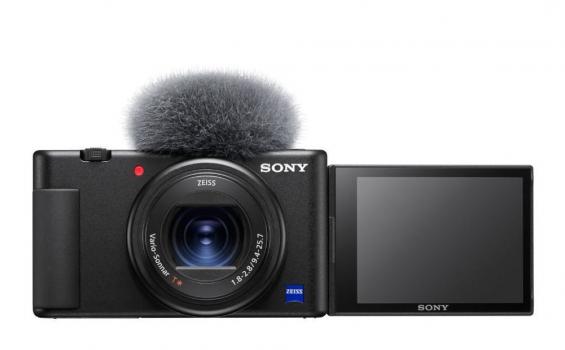
Main camera specifications
Camera type: Compact camera | Level: Advanced | Sensor: 1 inch
1 inch sensor | 2.7x optical zoom | 20.1 megapixels | 4K UHD | Super Slow Motion | Image stabilization | Connections for microphone and headphones | Fast and good autofocus | Real-time Eye Focus | Natural Colors | Weight: 294 grams
- Pocket-size & weight
- Good sound
- Fast focus
- Bright f/1.8 24-70mm lens
- No 4K, 60fps
The Sony ZV-1 is from 2020 and specially marketed to meet all the wishes of vloggers. Sony has taken all the good points of the RX100 series and put them in the ZV-1. You have the autofocus and microphone connection of the RX100 VII and the good 24-70 mm f/1.8-2.8 lens of the RX100 V. The camera is fast, small, light, and compact and is equipped with a good internal microphone, autofocus, image stabilization, built-in ND filters and even film gamma profiles like S-Log2.
Thanks to the combination of the large 1″ sensor and f/1.8 aperture, a lot of light enters through the lens, and you can also shoot clear images at night. Although the photo quality is fine, you really buy this camera for making videos.
Canon EOS R3 | Best professional camera
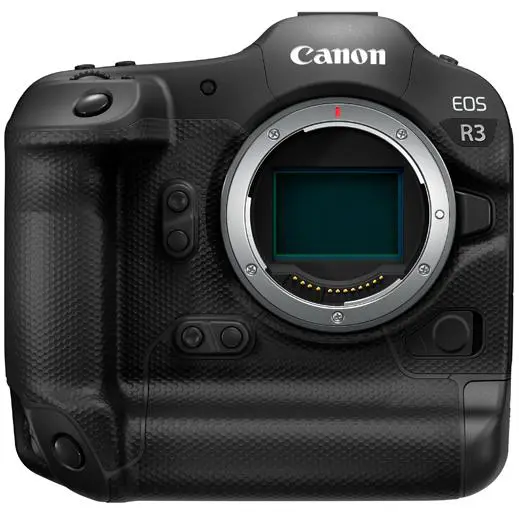
Main camera specifications
Camera type: Mirrorless camera | Level: Professional | Sensor: Full frame
Full Frame 24.1MP BSI CMOS Sensor | Filming in 6K RAW 12-bit | 4K oversampled 60fps | 4K 120fps | Eye-control focus | Eye, face and autofocus | ISO 50-204800 | 8 stops image stabilization (with rf lens) | Vari-angle 3.2″ touchscreen | 30 frames per second
- 30fps photos
- 6K RAW video
- Eye-control focus
- Blackout-free
- 24.1MP is little
- No 8K
- Shared SD/CFexpress
The Canon EOS R3 is perhaps Canon’s best camera at the moment. In principle, you can use it for any kind of photography, but it is mainly made for fast work. Think of sports and wildlife photography. With the full-frame 24.1MP BSI sensor, you capture a lot of light and information, which means you can take up to 30 photos per second with the electronic shutter. You film with a maximum of 30fps in 6K RAW 12-bit, 4K oversampled 60fps and DCI 4K 120fps. A novelty is the eye-control focus, where you focus with your eye on the object and the camera focuses on it. The lab tests show that this function actually works. However, use it more to highlight one person in a large group rather than for fast-moving subjects. It is a professional camera that has everything and is future-proof as well.
Sony A1 | Best full frame all-rounder
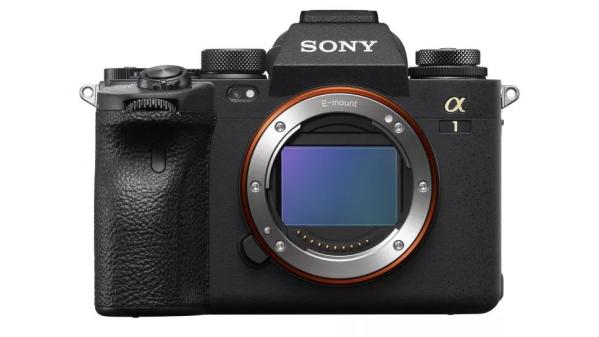
Main camera specifications
Camera type: Mirrorless camera | Level: Professional | Sensor: Full frame
Full Frame | Sony E mount | 50 megapixel CMOS Exmor RS sensor | 2x Bionz XR processors | 30 photos per second | 8K 30fps | 4K 120fps 10-bit 4:2:2 | 240fps viewfinder | 10 bit HEIF | 16-bit RAW video output | Tilt-LCD | 15 stops of dynamic range
- Extremely fast
- Great photo quality
- More features than most need
- Very expensive
The Sony A1 is Sony’s flagship and is committed to every kind of photography and film. You are able to use a high-resolution sensor with 50 megapixels and can film in 8K. It is an extremely fast camera and can be used in the studio, on the street, in the crowd or in severe weather conditions. For sports and wildlife photographers, this is a great camera because you take 30 photos per second in 50MP. That’s even better than the Canon EOS R5 can do.
The LCD screen is a bit disappointing, but that’s made up for by the 9.44-million-dot OLED electronic viewfinder. The Sony A1 has one of the best autofocus systems that is extremely fast and quiet. The price is high, which means that this camera finds itself well within the professional segment. But, if you want the very best all-rounder of the moment, and you have the money, then the Sony A1 is a logical choice. The Sony A1 is not number 1 because of its price.
Panasonic Lumix DC-S5 | Good beginner full frame mirrorless camera
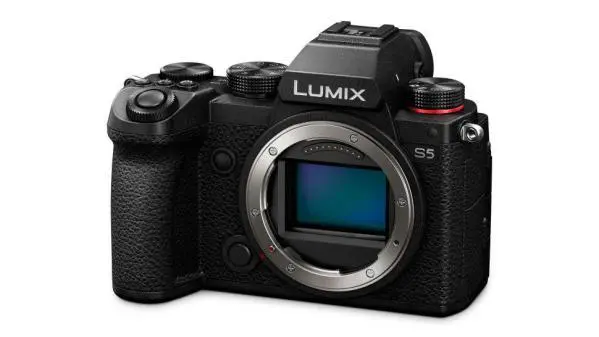
Main camera specifications
Camera type: Mirrorless camera | Level: Advanced | Sensor: Full frame
24.2mp full-frame CMOS | 4K 60p 10-bit 4:2:0 native | 4K 60fps 10-bit 4:2:2 via HDMI | Full HD 180fps | 96MP photo function | Dual Native ISO II up to 204800 | Eye, body animal focus | 7fps photo burst | 14+ dynamic range V-log | Vari angle screen | 4:3 anamorphic support | Dual Card Slots | Tiltable vari-angle screen
- Extraordinary power for a small camera
- 4K 60p 10 bit
- Full HD Q&S 180fps
- Super resolution photos
- Tiltable Vari-angle screen
- No overheating
- Too bad it can’t record 10-bit 4:2:2 internally
- Photo burst is on the slow side
Nikon Z7 II | Good for landscape photography
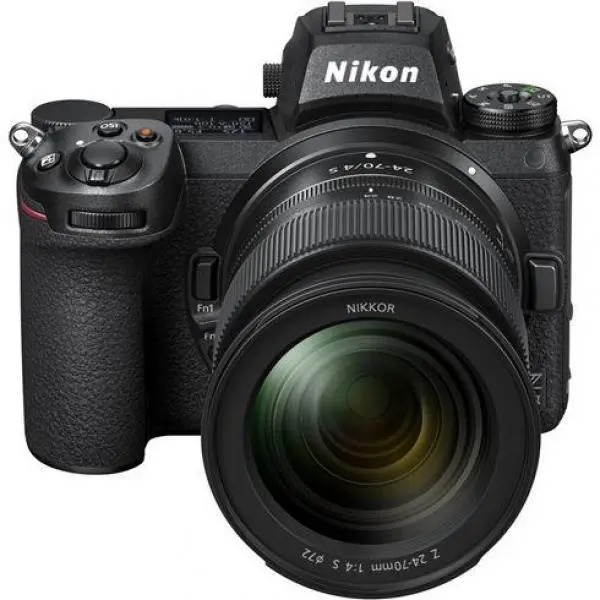
Main camera specifications
Camera type: Mirrorless camera | Level: Advanced-Professional | Sensor: Full frame
Mirrorless camera | Lens mount Nikon Z | 45.7MP BSI Full Frame sensor | Dual Expeed 6 image processor | ISO 64-25.00 | Hybrid AF | 493 AF points | Tilt touchscreen | 5-axis internal image stabilization | Weather resistant
- Great image quality
- 5-axis stabilization
- Best build quality
- Easy to use
- EVF resolution lower than others
- Tilt screen, instead of vari-angle
Sony A6400 | Mirrorless camera
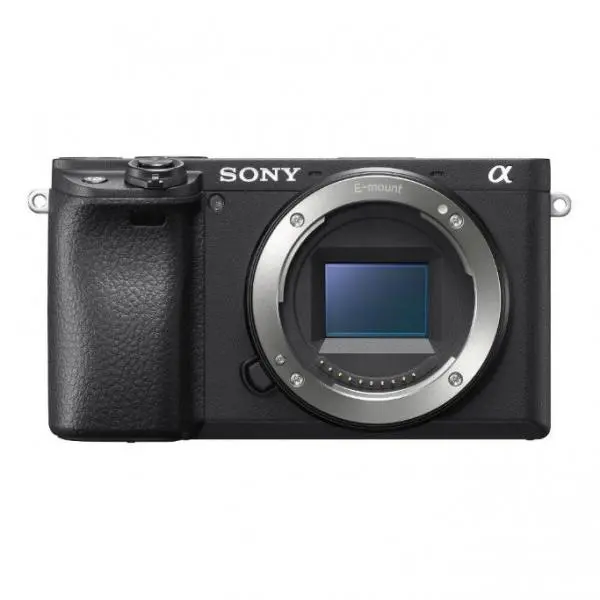
Main camera specifications
Camera type: Mirrorless camera | Level: Advanced | Sensor: APS-C
24.2 megapixels | APS-C sensor | Wi-Fi | 4K video | 11 photos per second continuous | 3″ 180 degree tiltable touchscreen | Focusing in 0.02 sec | New Bionz X Processor
Sony A6400 body
- 11 photos per second continuously
- 180 degree tiltable touch screen
- Microphone input
- Focusing in 0.02 second
- Old view finder
- Difficult and in-depth menu
- No 4K and 60fps film
OM System OM-1 | Travel mirrorless camera
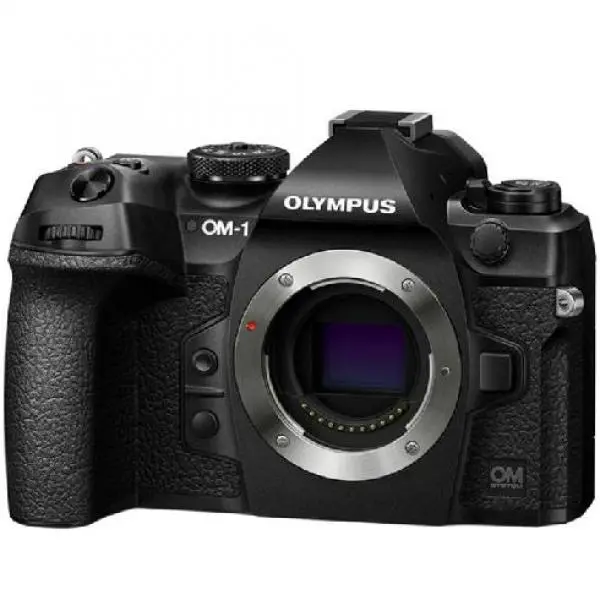
Main camera specifications
Camera type: Mirrorless camera | Level: Advanced-Professional | Sensor: Micro FourThirds
20MP Stacked BSI Live MOS MFT Sensor | Fast TruePic X Image Processor | Filming in 4k 60fps | 120 RAW photos per second | 1053 focus points | IP-53 weatherproof | 8-stop physical image stabilization | Compact and light | 551 grams
- 11 photos per second continuously
- 180 degree tiltable touch screen
- Microphone input
- Focusing in 0.02 second
- Only 20MP
- The buttons look cheap
The OM System OM-1 used to be called Olympus, but since the company takeover it bears a new name. The OM-1, the flagship, shows that you don’t necessarily need a full-frame camera for high quality. You have a stacked sensor with 20 megapixels at your disposal and a fast TruePix X image processor. This ensures that you can take no less than 120 RAW photos per second. So, you are completely ready for sports and bird photography. Thanks to the Micro FourThirds sensor, you’re also a little closer to it because of the crop of 2 times. The 20 megapixels seem a bit conservative, but in practice this is more than enough for almost any task. It is mainly the quality of the photo and video that matters, and you will have nothing to complain about with the OM-1. If you’re more of a videographer, you have 4K 60fps film at your disposal with internal image stabilization. At 551 grams, it is also a light (and weatherproof) camera and therefore an ideal travel companion!
Nikon Z5 | Cheap beginner full frame camera
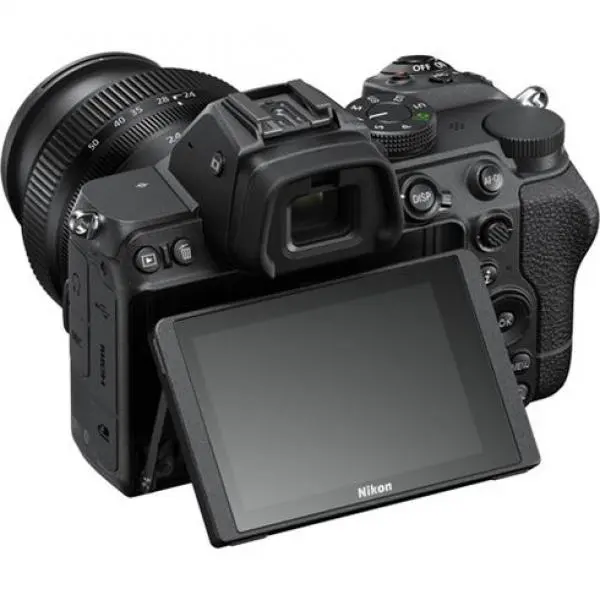
Main camera specifications
Camera type: Mirrorless camera | Level: Beginner | Sensor: Full frame
Full frame 24.3 CMOS sensor | 273 AF points | 5-axis image stabilization | 4K UHD 30fps Movie | 3.2″ tilting touchscreen | Dual UHS-II Card Slots | Wi-Fi, Bluetooth
- Many similarities with the Z6
- Sharp viewfinder
- 5-axis image stabilization
- No 4K 60fps
Perhaps you come from a Nikon DSLR, you are new to photography, or you want to upgrade to a full frame, but do not pay the top price. With the Nikon Z5, the company has launched a great camera that will appeal to a bigger group of people. You take 4.5 images per second, which makes it not suitable for sports photographers, but it is good for daily use. There is a crop on the 4K 30fps, but the image is sharp. There is actually nothing to criticize about this full-frame camera, and it will never be a bad buy.
GoPro Hero 10 Black Actioncamera
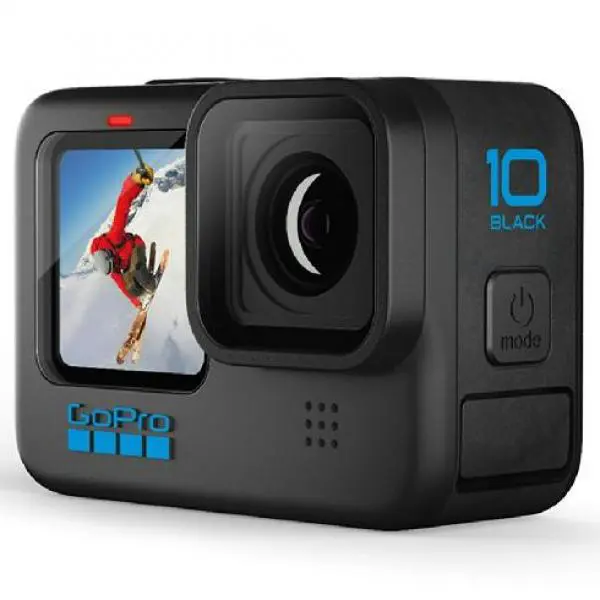
Main camera specifications
Camera type: Actioncamera – Level: Beginner/Advanced
- Better menus and interface
- Filming in 5.3K 60fps /4K 120fps
- Powerful GP2 processor
- Great image stabilization
- Lens hood is water-resistant
- Same little sensor
- Still not great in low-light
The GoPro Hero 10 Black is not an action camera that comes with revolutionary new functions, but it has ensured that everything that is already in it is better. The action camera is even easier to use and provides better images. Thanks to the entirely new GP2 chip processor, you can film in 5.3K at 60fps and in 4K at even 120fps. Especially for athletes, these high frame rates are fun to use. It is a pity that GoPro has not placed a new and larger sensor in the camera and that the images are only recorded at 100mbps. But, thanks to the new techniques, the images look razor-sharp and full of detail on large screens. Other advantages of the camera are that the lens hood is water-repellent, so you won’t see any drops on the screen. The stabilization has also been greatly improved compared to the GoPro 9. The GoPro 10 has become a bit more expensive than the previous models. We choose the GoPro 10 over the GoPro 11 since the 11 doens’t have mayor upgrades. There are other action cameras that do almost the same thing at the 10 black, but at a lower price. It remains an excellent purchase with great ease of use.
What is Camera Deals Online?

We at Camera Deals Online find the best video and photo camera, lens and drone and online prices for you. With us, you can find camera prices, top-lists and we write reviews and blogs with tips and camera information. In addition, we give you the latest news about camera smartphones, camera equipment, film, and photography field. This way, we help you find and buy the best camera, lens, drone, gimbal and accessories. Our website is 100% independent.
CameraDealsOnline exists thanks to you! When you buy a product through one of our links, we receive a small percentage of the total amount. This has no effect on the price of the product. Thank you!
News and recent posts

 Amazon.com
Amazon.com





